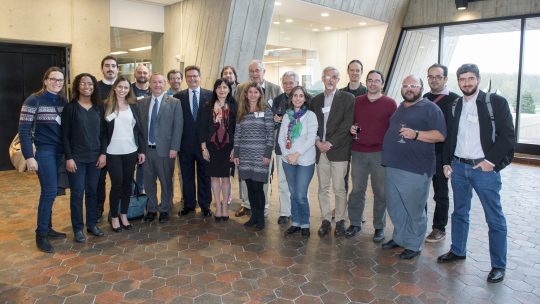1 - 10 of 18 results
Low-mass particles that make high-mass stars go boom
Simulations are key to showing how neutrinos help stars go supernova.
Upgraded PIP-II RFQ successfully takes first beam
A new radio-frequency quadrupole, designed and built by Lawrence Berkeley National Laboratory, will help provide intense, focused beams to the entire Fermilab accelerator complex.
The Planck scale
The Planck scale sets the universe’s minimum limit, beyond which the laws of physics break.
Watch: an experiment to create and ‘taste’ neutrinos
From Cosmos Magazine, May 19, 2016: The most elusive particles in the universe – neutrinos – might not stay hidden for much longer. Testing for the Deep Underground Neutrino Experiment, or DUNE, began earlier this year.
Brazil in Batavia: How a timely invitation sparked 30 years of partnership
The Brazilian user community at Fermilab consists of nearly 80 researchers from 15 institutions working across 13 different projects and experiments.
Why do objects feel solid?
A reader asks, “If atoms are mostly empty space, then why does anything feel solid?” James Beacham, a researcher with the ATLAS Experiment Group at Ohio State University, explains in this two-minute video.
Fermilab scientists cautiously excited about possible new particle
From Voice of America, May 11, 2016: As the Large Hadron Collider returns to full operation, scientists at Fermilab, America’s premier particle physics lab, are excited about a tantalizing discovery made at CERN.
What do theorists do?
Theorists map and navigate the sea of possible particle discoveries.







